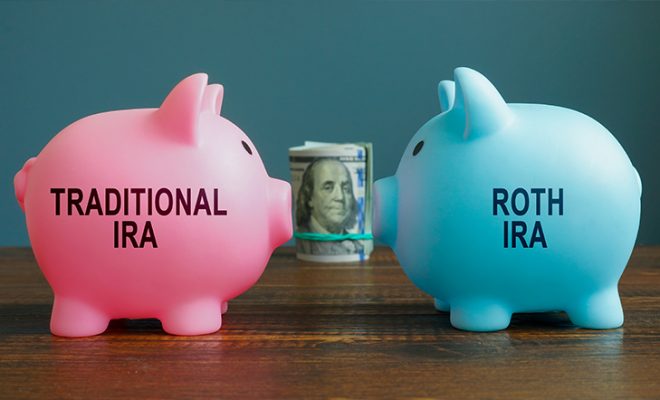60/40 vs 70/30 Asset Allocation: Which Is Better For Retirement?

60/40 and 70/30 are not complex math equations, even though they might seem so. On the contrary, they are portfolio allocation strategies. These numbers refer to the percentage split between equity, also known as stocks and debt, which popularly includes fixed-income instruments like bonds, in your investment portfolio.
Now, which one is better? Is there really a difference, or is it just a case of six of one, half a dozen of the other?
The answer depends on several factors, including your financial goals, life stage, investment experience, and the level of risk you are willing to take. But before jumping to any conclusions, you need to know what each allocation really entails. Only then can you include the right one in your retirement strategy.
So, let’s break down the differences!
What is the 60/40 rule for asset allocation?
The 60/40 rule refers to an asset allocation strategy where 60% of your investment portfolio is allocated to equities, which are typically stocks. The other 40% is invested in fixed-income securities, usually bonds. This split can be comfortably used by beginner investors, as it offers a balanced mix of growth potential and income stability.
The equity portion, which comprises 60% of your portfolio, can include individual stocks across sectors, market caps, and geographies. These include large-cap blue chip stocks, mid-cap growth stocks, small-cap stocks, dividend payers, and international stocks. On the other hand, the 40% in bonds can consist of government, corporate, or municipal bonds. It may also include bond funds or Treasury Inflation-Protected Securities (TIPS).
The 60/40 asset allocation strategy may be suitable for younger investors just starting out. As these individuals are just starting to invest, the strategy can offer them growth potential due to its equity exposure. At the same time, it can protect their money, as it aims to achieve long-term capital appreciation without taking on the full volatility of a 100% stock portfolio. It can also be used if you are nearing retirement or are retired.
What is the 70/30 rule for asset allocation?
A 70/30 portfolio allocates 70% of your investments to equities, such as individual stocks, real estate, or cash and short-term instruments, and the remaining 30% to fixed-income securities, including various types of bonds. Compared to the more traditional 60/40 split, this approach carries a higher risk because of the increased exposure to stocks.
The 70/30 allocation may deliver superior risk-adjusted returns over the long term, especially during bull markets. However, the increased equity exposure also indicates that the portfolio is likely to suffer deeper losses during market downturns or in years when stocks perform poorly.
Due to this evident higher risk profile, the 70/30 rule is generally more suitable for young, yet experienced, investors who have a higher risk tolerance and a longer investment horizon. It may not be ideal for beginners or those nearing retirement. The 70% equity can introduce more volatility, which could be more complicated to manage for the average Joe.
As the saying goes, it is a bit of a double-edged sword. While the potential for greater returns is higher, so is the potential for sharper losses.
What is the difference between 60/40 and 70/30 asset allocation?
Here are some basic differences between the two asset allocation strategies:
| Aspect | 60/40 allocation | 70/30 allocation |
| Basic idea | 60% of your money goes into stocks and stock-related instruments, and 40% into bonds. The 60/40 strategy is relatively more balanced. | 70% of your money is invested in stocks and stock-related instruments, and 30% in bonds. The 70/30 allocation is more of a growth-chaser compared to the 60/40. |
| Who is it for? | This one may appeal to a broader range of investors. It can be beneficial for young professionals, individuals in their 30s and 40s, and even those nearing retirement or already retired, provided they are comfortable with a bit of risk. | This one can be ideal for those in their 20s to 50s. However, preferably those who have some investment experience under their belt. It is not usually recommended close to retirement unless you are comfortable riding some market storms. |
| Risk level | With a 60% investment in equity, the risk is evident, and there is no denying it. However, a 40% allocation in bonds can help cushion the blow when the stock market takes a downturn and throws your plans off track. | The 70/30 allocation strategy is definitely a riskier ride. The extra 10% in stocks may seem like only a small hike, but it can result in significantly bigger gains. At the same time, it may also result in deeper downs when things go south. So, it is certainly not for the faint-hearted. |
| Stability vs. growth | This mix offers a blend of both. You get to access market growth through equities and stability through bonds. | This allocation is focused more on growth than stability. While you do get a 30% investment in debt instruments, the strategy leans more towards wealth creation. |
| Volatility | It may be a smoother journey overall. When markets dip, the bond portion helps keep things from falling apart. | With a 70/30 allocation, you can expect a bit more twists and turns. You will likely see higher gains in good years, but also sharper losses in bad ones. |
| Use around retirement? | Potentially yes, if you are still open to some equity exposure. A 60/40 mix may be able to help your money grow without exposing your entire nest egg to too much market risk. | It can be used near retirement if you have other stable income sources. However, even then, it may feel too risky for most people at that stage. |
How do you decide between a 60/40 and a 70/30 split?
Let’s keep it simple. If you are new to investing or have been at it for a while but still prefer a more balanced approach, the 60/40 split can be a suitable option. With the 60/40 mix, you get adequate equity exposure to help your money grow. At the same time, you also have a solid 40% in debt that can likely cushion your investments when markets get jittery. In fact, the 60/40 mix works well for a wide range of people and is commonly used by most.
- Are you just starting out in your 20s and don’t want to take on too much risk? This works!
- Are you in your 30s or 40s, trying to grow wealth while also struggling with a mortgage? Still works.
- Even if you are nearing retirement or already retired, say in your late 50s, 60s, or beyond, and you are comfortable with a little market movement, a 60/40 portfolio could still be a good fit, especially if you have a financial advisor watching your back.
Now, let’s talk about the 70/30 mix.
This one is tilted more towards equity, offering greater growth potential but also increased volatility. It is not for everyone, and especially not for people who panic with every market turn. You need a strong stomach to digest the ups and downs. However, if you have sufficient experience, the patience to weather the setbacks, and a long investment horizon, this setup can work well for you.
The 70/30 approach is ideal for younger investors in their 20s and 30s who have the time to weather market cycles. It can also suit individuals in their 40s who have gained some experience and are now confident in investing, and are willing to take on more risk. You ideally need to have time on your side.
This is why this mix may not be ideal as you approach retirement. If you are nearing your 60s, this level of risk might add more uncertainty. When you reach this phase, it may be a good idea to dial back and shift towards a 60/40 or even higher concentration in debt and lower in equities.
The 60/40 and 70/30 are not the only allocation strategies out there. There are several more. You may also have questions about them. Let’s explore and compare another popular asset allocation strategy – the 80/20.
What is the difference between 70/30 and 80/20 asset allocation?
Both 70/30 and 80/20 asset allocation strategies place a heavy emphasis on equities. These are aggressive measures that involve investing more in stocks than in bonds or fixed-income instruments. The main difference here is risk.
With the 70/30 strategy, you allocate 70% of your money to equity and 30% to fixed income. With 80/20, the equity portion jumps to 80%, leaving just 20% in safer assets, such as bonds.
Now, you may wonder why anyone would want to do that.
An 80/20 portfolio can potentially offer higher returns over the long term. Stocks have historically outperformed bonds. So, investing more in them can help you create wealth in the long run. But they also come with higher volatility. The more you invest in them, the more ups and downs you may see. Investing 80% of your portfolio in stocks means that 80% of your portfolio could take a hit if the market were to crash. Again, this is not a situation for the faint of heart.
The 70/30 mix, although also aggressive, still attempts to strike a balance a bit more. It still invests heavily in stocks, but that extra 10% in bonds can be relatively less risky.
So, who should consider 80/20?
If you are young, have a high risk tolerance, and do not plan to touch your investments for a long, long time, an 80/20 strategy might be okay. You must have time on your side to ride out the market’s many moods. You may also need experience and should understand how markets behave to be comfortable with this level of risk.
Asset allocation may be a no-no if you are nearing retirement. Imagine you are set to retire in two years and the market drops. An 80/20 mix can be too extreme at such a time and force you to delay retirement or retire with substantially less than you had planned for. As you approach retirement, you may want to shift to a more conservative investment strategy to preserve your savings.
60/40 vs 70/30 vs 80/20 asset allocation
It really boils down to a few factors – how far you are from retirement, how comfortable you are with risk, and how much experience you have with market fluctuations.
A 60/40 portfolio is the most commonly used portfolio balance and can be used by almost everyone. It offers a balanced approach when preparing for retirement. Now, if you are okay with a bit more risk, you might look at the 70/30 option. With 70% in equity, you have more potential for long-term growth, but less safety. If you want to be even more daring, you may consider the 80/20 split. Here, 80% of your portfolio is in stocks and just 20% in fixed income.
The closer you are to retirement, the more cautious you should be with equity exposure, making the 60/40 split a more suitable option. However, if you are just starting out and have the time and stomach to ride the market’s highs and lows, you can afford to take on more risk with something like a 70/30 or 80/20 allocation.
The best allocation is the one that fits your goals!
Your asset allocation strategy should be tailored to your individual needs. While templates like 60/40, 70/30, or 80/20 can be helpful, the exact mix of stocks and bonds you choose ultimately depends on your own goals, comfort with risk, and where you are in life.
One of the most effective ways to determine your ideal allocation is to sit down with a financial advisor and discuss it in detail. A financial advisor can help you compare 60/40 vs 70/30 portfolio historical returns with those of 80/20 and help you make a decision.
If you do not already have someone you trust, tools like our free advisor match tool can help you connect with a professional who fits your needs. Sometimes, just having an expert by your side can make your decision a whole lot clearer.
For further information on creating a suitable retirement plan for your unique financial requirements, visit Dash Investments or email me directly at dash@dashinvestments.com.
About Dash Investments
Dash Investments is privately owned by Jonathan Dash and is an independent investment advisory firm, managing private client accounts for individuals and families across America. As a Registered Investment Advisor (RIA) firm with the SEC, they are fiduciaries who put clients’ interests ahead of everything else.
Dash Investments offers a full range of investment advisory and financial services, which are tailored to each client’s unique needs providing institutional-caliber money management services that are based upon a solid, proven research approach. Additionally, each client receives comprehensive financial planning to ensure they are moving toward their financial goals.
CEO & Chief Investment Officer Jonathan Dash has been covered in major business publications such as Barron’s, The Wall Street Journal, and The New York Times as a leader in the investment industry with a track record of creating value for his firm’s clients.










